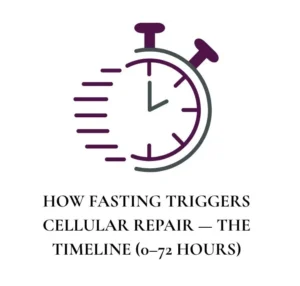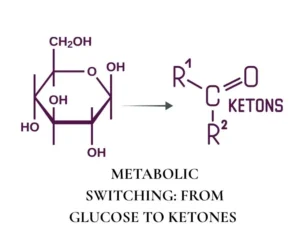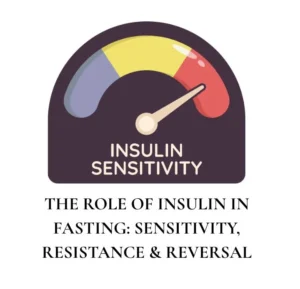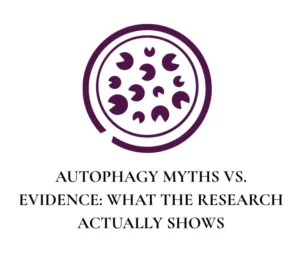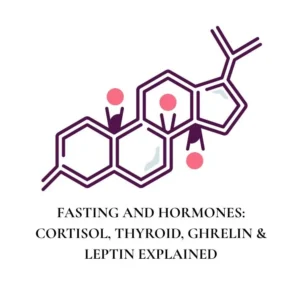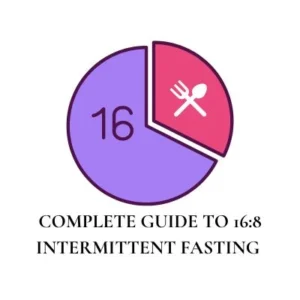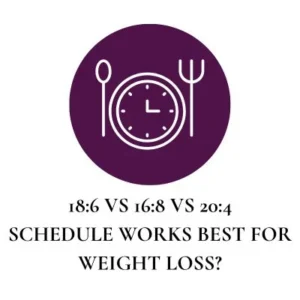The Fear That Holds People Back
Be honest with me for a moment.
When you think about fasting — whether it’s skipping meals or going a whole day without food — what’s the first fear that comes to your mind?
Table of Contents
ToggleFor most people, it isn’t hunger.
Hunger is temporary and manageable. The real fear is deeper:
👉 “If I fast, won’t my body burn up my muscles? Won’t I lose all the strength I worked for?”
I hear this from men trying to protect their biceps.
I hear it from women trying to avoid sagging skin or weakness.
I even hear it from older adults worried about frailty.
This fear is natural — because muscle is precious. It’s not just about looking toned. Muscle is your engine of vitality.
It keeps your metabolism strong, your posture upright, your bones protected, and your independence intact as you age.
Losing it unnecessarily would be a tragedy.
But here’s the truth I want you to hold onto while you read this:
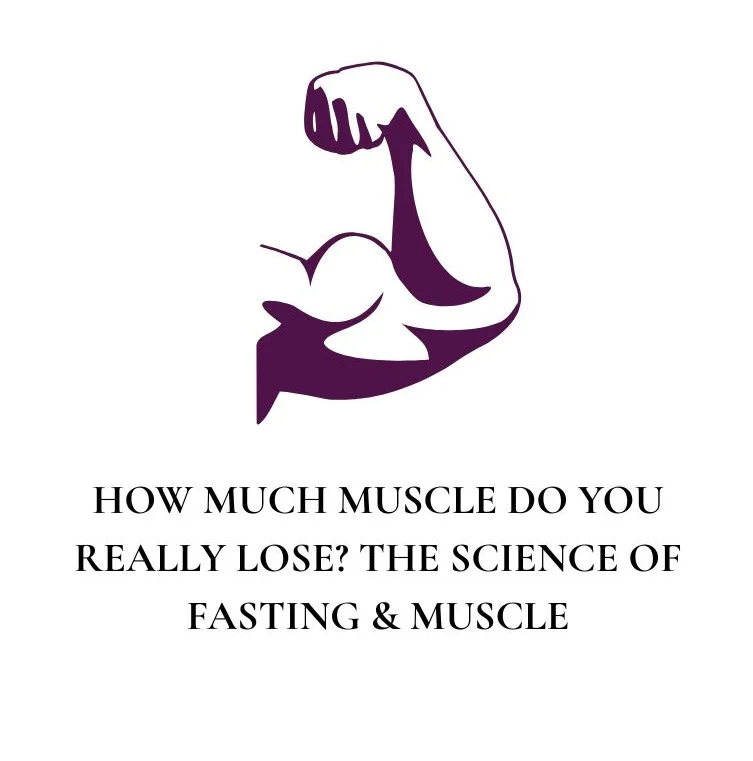
Your body is not stupid. It does not “eat muscle” recklessly.
In fact, your body has evolved to protect muscle during fasting — because without that protection, our ancestors would never have survived periods without food.
Let’s walk through this together. By the end, you’ll understand exactly how much muscle is really lost during fasting (spoiler: much less than you think), and how you can fast in ways that preserve — even enhance — your lean strength.
How Your Body Chooses Fuel (And Why It Doesn’t Rush to Muscle)
Your body has a fuel hierarchy. It doesn’t randomly burn tissue. It follows a smart order:
- Glycogen (stored glucose in liver/muscles): Like the “wallet cash” of energy. Used first. Lasts 12–24 hours depending on activity.
- Fat (triglycerides): The big bank account. Even lean people carry tens of thousands of calories here.
- Protein (muscle and organs): The body’s functional assets. Only touched if really needed.
👉 Notice that muscle is last. Your body defends it, not wastes it, because without muscle you couldn’t hunt, run, or survive.
When fasting, the shift looks like this:
- First 12–24 hours: Glycogen runs the show.
- After 24 hours: Fat and ketones dominate.
- Protein? Tapped sparingly, mostly for glucose needs in specific cells (like red blood cells) — but preserved wherever possible.
This is the opposite of the “starvation mode” myth that people throw around.
The Muscle-Saving Tricks Built Into Fasting
Why doesn’t fasting shred your muscles? Because nature gave you safety nets.
- Growth Hormone Surge
Fasting boosts growth hormone (GH) by up to 5x. GH signals the body to preserve lean tissue and mobilize fat instead. Think of it as a shield protecting muscle.
- Ketones Replace Protein Needs
When liver glycogen is low, the body produces ketones from fat. These ketones fuel the brain, sparing muscle from being broken down into glucose.
- Autophagy Recycles Junk First
Cells clean up damaged proteins through autophagy before breaking down healthy muscle. It’s like recycling garbage before dismantling furniture.
- Muscle Uses Fat, Not Its Own Protein
Skeletal muscle cells switch to burning fatty acids and ketones for their own energy, further sparing their protein.
👉 Put simply: fasting turns your body into a fat-burner, not a muscle-cannibal.
What the Science Actually Shows
Let’s get specific.
- Intermittent fasting (16–24 hours)
Studies consistently show no significant muscle loss. In fact, many people maintain or build muscle if protein is adequate during eating windows. - Alternate-day fasting
Trials (Varady et al.) reveal lean mass preservation comparable to traditional calorie restriction, with better fat loss. - Extended fasting (48–72+ hours)
Some muscle protein is used, especially in the first 2–3 days, but the body quickly adapts. Protein breakdown drops as ketones rise. Losses are modest and recoverable. - Classic Cahill studies (1960s)
Showed that after 3 days of fasting, the body spares muscle by dramatically increasing ketone use. Muscle breakdown is highest early but tapers.
👉 Numbers? A 70 kg adult might lose ~200–400 grams of lean tissue in a 5-day fast — but 2–4 kg of fat. Proportionally, fat is the main fuel.
How Fasting Compares to Dieting
Here’s the irony:
- Chronic calorie restriction diets often cause more muscle loss than fasting — because insulin stays high with constant small meals, fat can’t be fully accessed, so muscle gets tapped.
- Fasting drops insulin, opens fat stores, and raises growth hormone — protecting muscle while burning fat.
This is why fasting often leads to a better body composition (higher muscle-to-fat ratio) than traditional dieting.
Muscle Loss Fears: Breaking Down the Myths
❌ Myth 1: “If I skip breakfast, I’ll lose muscle.”
Truth: Missing one meal won’t touch muscle. Your body burns glycogen and fat first.
❌ Myth 2: “Each day of fasting = 1 pound of muscle lost.”
Truth: Most early weight lost is glycogen + water. Actual protein loss is minimal.
❌ Myth 3: “Bodybuilders can’t fast.”
Truth: With planned nutrition and training, many athletes maintain or even build muscle while fasting.
Practical Tips to Protect Muscle While Fasting
Now, if you want not just to avoid muscle loss, but to feel strong through fasting:
- Prioritize Protein When Eating
- Aim for 1.2–1.8 g protein per kg of body weight daily.
- Eggs, fish, poultry, legumes, and whey are excellent sources.
- Do Resistance Training
- Lifting weights or even bodyweight exercises (push-ups, squats) signal the body: “This muscle is needed — keep it.”
- Hydrate & Mind Electrolytes
- Water and electrolytes prevent glycogen-related water losses from feeling like muscle loss.
- Keep Extended Fasts Occasional
- Intermittent fasting daily + extended fasts once in a while = best balance.
- Break Fasts Wisely
- Reintroduce food with protein, minerals, and easily digestible nutrients (bone broth, eggs, vegetables).
Special Populations
Women
- Often conserve protein more efficiently due to estrogen.
- Benefit greatly from protein-rich refeeds.
Older Adults
- Higher risk of muscle decline (sarcopenia).
- Should combine fasting with strength training + higher protein targets.
Athletes
- Can use fasting to cut fat while keeping lean mass.
- Must carefully time training and protein intake.
This Is For You
Now pause for a second. Think about your own life.
👉 Do you avoid fasting because you fear muscle loss?
👉 Do you feel weak after dieting attempts that stripped weight but also stripped strength?
👉 Do you secretly wish there was a way to lean out without sacrificing the body you’ve worked hard for?
You’re not alone. I’ve seen countless patients in the clinic who came with the same worries.
nd I’ve seen the relief on their faces when they realized their body is smarter than the myths told them.
When guided properly, fasting doesn’t make you fragile. It makes you resilient.
But here’s the key: guidance matters.
Because while the body is smart, it’s also unique.
What works for a 30-year-old athlete isn’t the same as what works for a 55-year-old woman with thyroid issues.
That’s why I encourage you: don’t just experiment blindly.
Let’s create a plan that protects your muscle, taps your fat, and respects your body’s needs.
FAQs
Q: Can I build muscle while fasting?
👉 Yes, if you strength train and meet protein needs in eating windows.
Q: What’s worse for muscle — fasting or dieting?
👉 Dieting with constant small meals often harms muscle more. Fasting protects it.
Q: How do I know if I’m losing muscle?
👉 True muscle loss shows as strength decline, not just weight drop.
Q: Should women fast differently?
👉 Often yes — shorter fasts, careful with cycle phases, protein focus.
Q: Is extended fasting safe for everyone?
👉 No. It requires supervision, especially for older adults, people on medication, or those with health conditions.
Closing Thought: Stronger, Leaner, Smarter
So, how much muscle do you really lose when fasting?
👉 Almost none in short fasts. Minimal in longer fasts — and recoverable.
Your body’s design is brilliant. It knows to protect your strength while burning away fat.
But to unlock this safely, and to tailor it to you, guidance makes all the difference.
Because this isn’t about just “not losing muscle.” It’s about:
- Reclaiming your energy.
- Protecting your strength.
- Reshaping your body with health at its core.
Fasting, when done right, can help you get there.
And if you’d like support to create a plan that’s effective, safe, and customized to your life — that’s exactly what we do.
👉 Don’t let the fear of muscle loss hold you back. With the right approach, fasting can give you fat loss without weakness — a leaner, stronger version of you.


